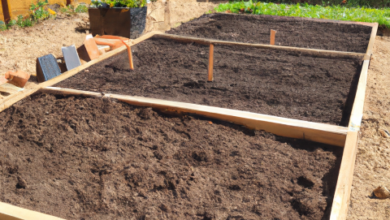Kitchen Composting: A guide to turning Organic waste into Nutrient-Rich Compost

Are you tired of throwing away food scraps and other organic waste? Do you want to reduce your carbon footprint and produce nutrient-rich soil for your garden? Kitchen composting may be the solution you’ve been looking for.
What is Kitchen Composting?
Kitchen composting is the process of turning organic waste from your kitchen into compost, a nutrient-rich soil amendment that can be used to improve soil fertility and structure. Composting is a natural process that involves the breakdown of organic matter by microorganisms and other decomposers.


Why Compost in the Kitchen?
Composting in the kitchen has many benefits, including:
- Reducing the amount of organic waste that goes to the landfill, where it produces methane, a potent greenhouse gas.
- Producing nutrient-rich compost that can be used to improve soil fertility and structure.
- Reducing the need for synthetic fertilizers, which can harm soil health and water quality.
- Providing a fun and educational activity for kids and adults alike.
How to Compost in the Kitchen?
Here are the steps to follow for successful kitchen composting:
- Choose a Compost Bin
There are many types of compost bins available, including countertop composters, under-sink composters, and outdoor composters. Choose a bin that suits your needs and space limitations.
- Collect Organic Waste
Collect organic waste from your kitchen, including fruit and vegetable scraps, coffee grounds, tea bags, eggshells, and more. Avoid adding meat, dairy, and oily foods, which can attract pests and slow down the composting process.
- Maintain the Ideal Carbon-to-Nitrogen Ratio
The ideal carbon-to-nitrogen ratio for composting is 30:1. Carbon-rich materials include dry leaves, straw, and shredded paper, while nitrogen-rich materials include food scraps, grass clippings, and manure. To maintain the ideal ratio, add a mix of carbon and nitrogen materials to your compost bin.

- Maintain the Optimal Temperature and Moisture Levels
Composting microorganisms work best in warm and moist conditions. The optimal temperature for composting is between 120 and 150 degrees Fahrenheit, and the ideal moisture level is around 50%. To maintain these conditions, add water to your compost bin as needed and turn the compost pile regularly to aerate it.
- Wait for the Compost to Mature
The composting process can take anywhere from a few weeks to several months, depending on the size of your compost bin and the materials you add. When the compost is mature, it should be dark, crumbly, and have an earthy smell. Use it as a soil amendment in your garden or potted plants.
In Conclusion:
Kitchen composting is an easy and rewarding way to reduce your carbon footprint and produce nutrient-rich soil for your garden. By following these simple steps, you can turn your organic waste into a valuable resource and make a positive impact on the environment.
Also read Make your own compost at home




